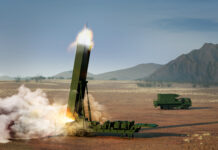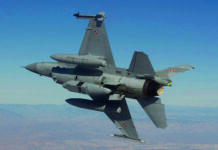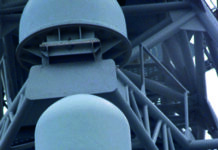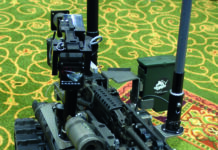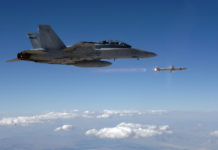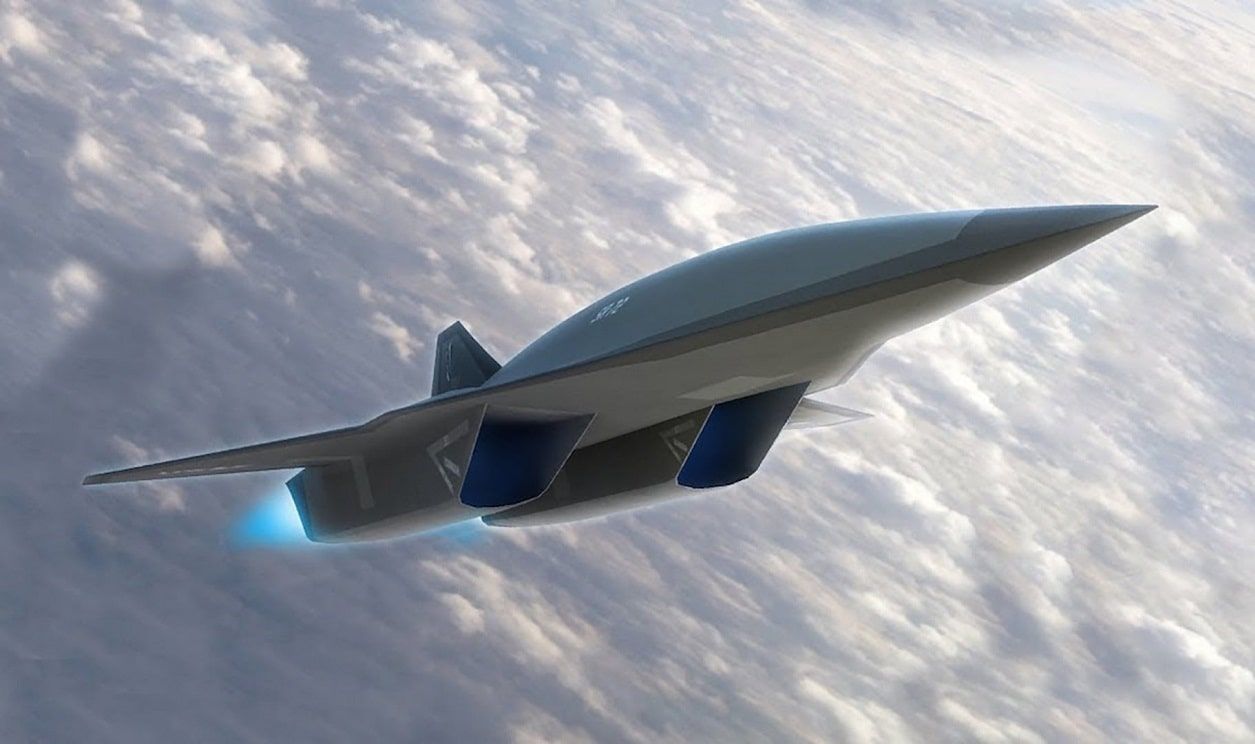
Powerplants for Mach 5 and Beyond
Doug Richardson
The quest for speed has always spurred the development of aircraft and missile power-plants, and the growing need for speeds of at least Mach 5 within the atmosphere has resulted in new and novel solutions for what is termed hypersonic flight.
Early Attempts at Mach 5
Although NASA’s North American X-15 regularly achieved hypersonic speed during the 1960s, this was an air-launched research aircraft powered by a rocket motor, so did not represent a viable long-term route to hypersonic flight. To date, no hypersonic military aircraft or UAV is known to have flown.
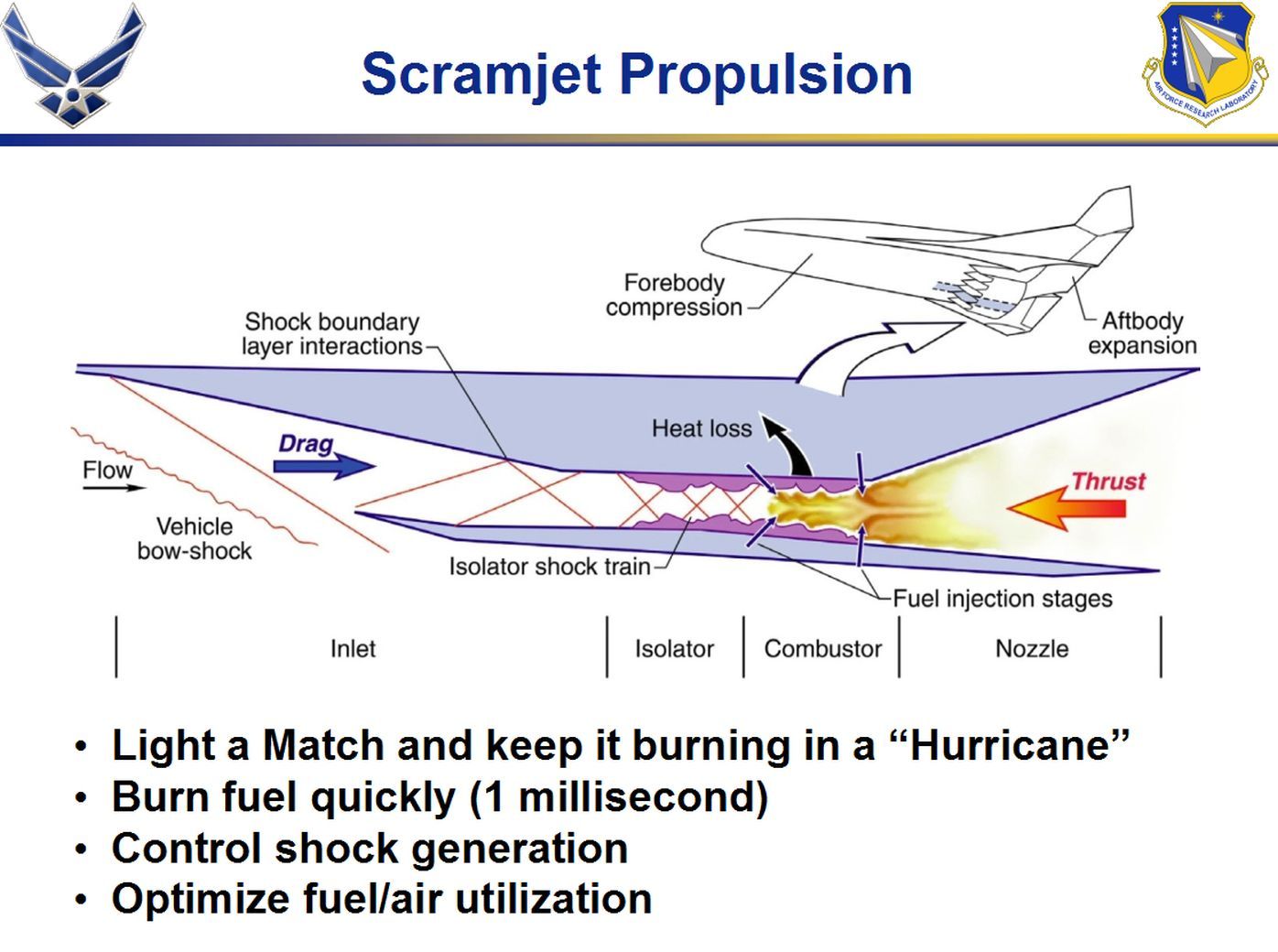
In 1986, the US embarked on an ambitious programme to develop the NATIONAL AERO-SPACE PLANE (NASP), a single-stage-to-orbit (SSTO) spacecraft. Envisaged as an advanced technology demonstrator project, the planned Rockwell X-30 would have been powered by an integrated scramjet burning slush hydrogen. The response by what was then the Soviet Union was the Tupolev Tu-2000. This would have been powered by a less-sophisticated powerplant installation that combined four turbojet engines, a ramjet, and two liquid-propellant rocket engines. Neither of these programmes resulted in a prototype aircraft. NASP and the Tu-2000 were both cancelled in 1993.
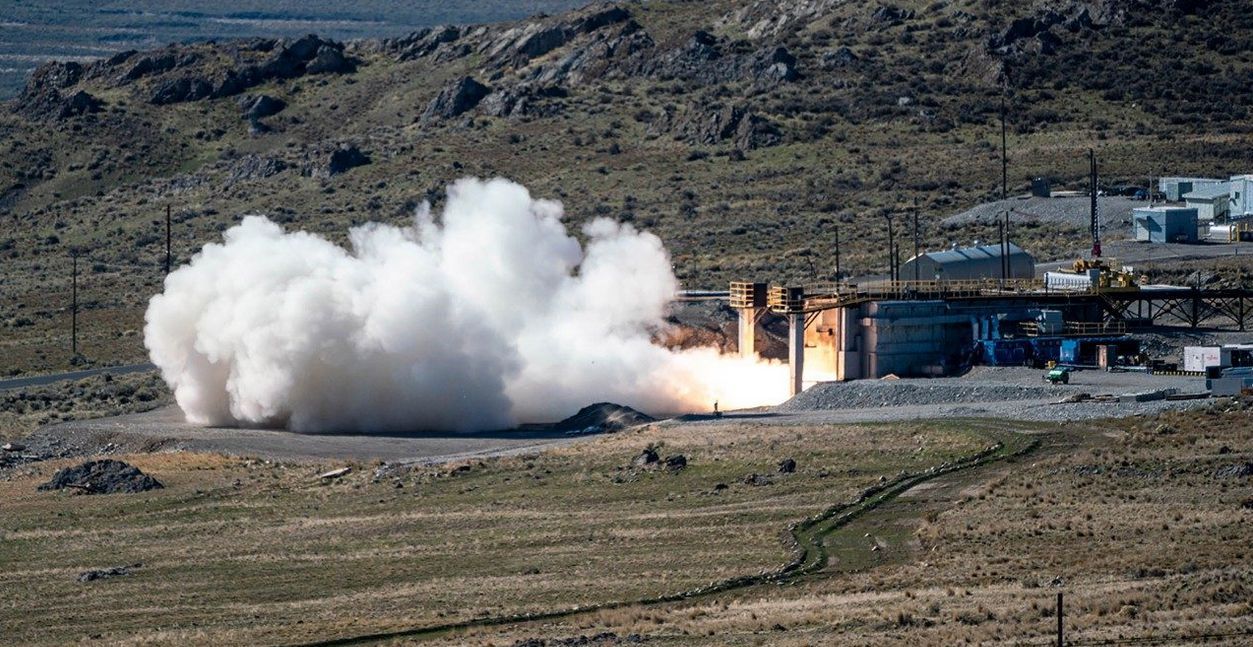
Photo: US Navy / Lockheed Martin
Hypersonic Missiles
Therefore, for the moment, hypersonic flight is the realm of the missile. This level of performance is not new – speeds approaching this class were obtained by the German A-4 (V-2) ballistic missile around 80 years ago during a trajectory that carried this pioneering weapon high above the atmosphere. Although Russia boasted about having attacked several targets in Ukraine by means of hypersonic missiles in March, April, and May 2022, the weapon used was the Kh-47M2 KINZHAL, an air-launched version of the ground-launched 9K720 ISKANDER (SS-26 STONE) short-range ballistic missile. KINZHAL is understood to use the same propulsion system and payloads as the ground-based weapon.
Most ballistic missiles reach hypersonic speeds, but follow a predictable trajectory. The new generation of hypersonic weapons combine high speed with the ability to manoeuvre in the mid or late stages of flight. This allows them to fly low enough to avoid being engaged by anti-ballistic missile defences, and without following a predictable trajectory. They are also fast enough to avoid being engaged by surface-to-air missile systems.
Hypersonic Glide Vehicles
There are two basic forms of hypersonic missile. The simpler technique involves mounting one or more unpowered Hypersonic Glide Vehicles (HGVs) onto a single-stage or multi-stage rocket booster. The second and more complex class of weapon is a hypersonic cruise missile (HCM) with an air-breathing propulsion system.
As its name suggests, an HGV obtains all its energy from an initial rocket-powered boost. Once this has been completed, the HGV begins its glide phase of flight. HGVs are typically released at altitudes from around 50 km to more than 100 km; the precise altitude, velocity, and flight path angle being chosen to enable the vehicle to glide in the upper atmosphere until the vehicle reaches its target.
The aerodynamic configuration of an HGV is designed to generate lift from the rarefied atmosphere that is equal to its weight, or slightly higher than its weight if the vehicle is manoeuvring. It will encounter drag, so that energy will begin to dissipate, resulting in the gradual loss of speed, and the need to fly at a slowly-decreasing altitude so that increased air density can maintain the required lift.
If an extreme range is needed, an HGV could be fitted with a small rocket motor or some other form of propulsion in order to minimise the reduction in velocity caused by drag, and allow a greater degree of attitude or directional control. Inevitably, there will be a trade-off between these additional capabilities and the increased weight and complexity of the vehicle.
The Russian AVANGARD (Vanguard) HGV illustrates the simplest method of boosting such systems to hypersonic speed – mounting one or more as the payload of an existing ballistic missile. Originally designated Yu-71 and Yu-74, AVANGARD is reported to have begun flight tests in 2015 or 2016. For these early trials, the vehicle was mounted on UR-100UTTKh (SS-19 Mod 3 STILETTO) ICBMs launched from Dombarovsky Air Base in Orenburg Oblast, but an R-36M2 (SS-18 Mod 5 SATAN) heavy ICBM was launched from the same site was used in October 2016 for what is reported to be the first fully-successful test.
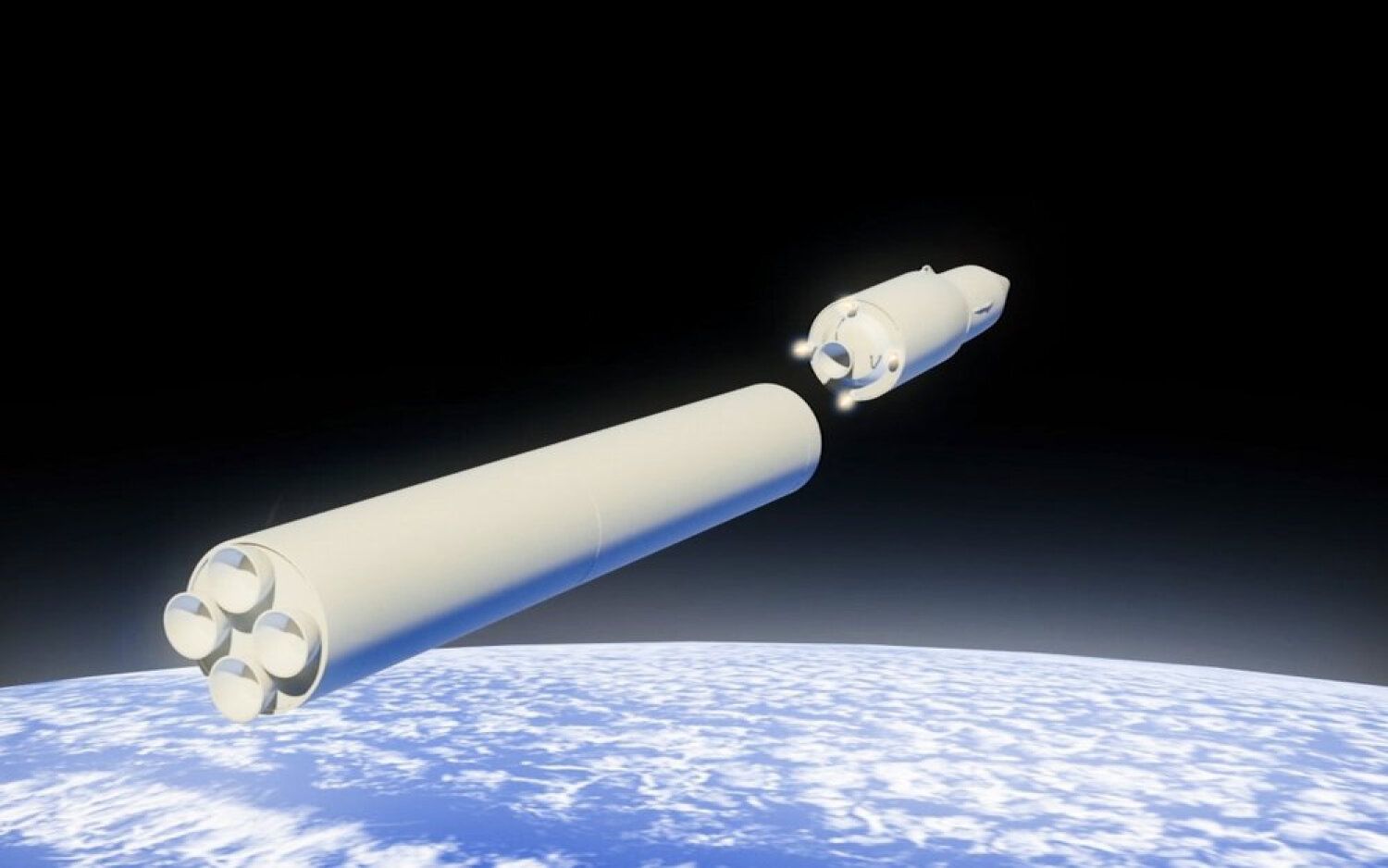
AVANGARD is 5.4 m long, weighs about 2,000 kg, and can deliver nuclear or conventional payloads. It can be carried as a MIRV payload by the UR-100UTTKh, R-36M2 and the new RS-28 SARMAT. While it probably does not have any form of independent propulsion system, AVANGARD can make sudden horizontal and vertical evasive manoeuvres as it approaches its target at speeds of around Mach 20–27.
For its DONGFENG 17 missile, China adapted its existing DONGFENG 16 (CSS-11), a single-stage solid-propellant missile with a maximum range of 800–1,000 km. In place of the 1,000–1,500 kg warhead of the DF-16, the DF-17 carries a DF-ZF hypersonic glide vehicle.
Using an existing ballistic missile as a booster for an HGV payload is probably the simplest engineering route, but if necessary, the missile can be modified for its new role. In September 2021, North Korea flight-tested a hypersonic payload similar in configuration to that carried by China’s DF-17. This was launched using what seems to be a shortened version of that country’s HWASONG-12 intermediate-range ballistic missile.
On-Demand Thrust
The optimum solution is probably to mount the HGV on a custom-designed booster. Under DARPA’s OPERATIONAL FIRES (OpFires) programme, an Aerojet Rocketdyne throttleable solid-propellant second stage motor developed under the Agency’s Operational Fires (OpFires) program successfully completed a full-scale static test firing in mid-2021, demonstrating the technology needed to provide on-demand thrust termination. Under a contract modification awarded to Lockheed Martin Missile & Fire Control, the OpFires programme has moved to Phase 3b, in which a ground-launched intermediate-range hypersonic missile will be built and flight tested. Thrust termination capability is needed to allow the weapon to deliver a hypersonic boost glide weapons to varying ranges after being launched from a mobile ground launch platform capable of rapid deployment and redeployment.

On 27 May 27 2021 Lockheed Martin and Northrop Grumman successfully conducted live-fire ground test of the first-stage solid rocket motor planned for the USN’s Conventional Prompt Strike (CPS) and US Army’s Long Range Hypersonic Weapon (LRHW) programmes. CPS and LRHW are expected to use a common missile suitable for use from surface ships, submarines, and land-based mobile launchers.
Two concepts for an air-launched hypersonic missile were studied by the USAF, but in early 2020, the Lockheed Martin Missiles and Fire Control AGM-183 Air-Launched Rapid Response Weapon was selected rather than the Hypersonic Conventional Strike Weapon from the Space division of Lockheed Martin Space. The AARW was smaller than the HCSW, so could be carried on the centreline hardpoint of an F-15 EAGLE. An aeroshell used to protect the hypersonic glide body payload is jettisoned after booster burnout at a speed of around Mach 5.
The Ramjet
Early flight-tests of the AGM-183 failed, with the missile either failing to separate from its B-52H STRATOFORTRESS launch platform, or separating but failing to ignite its booster. During a trial conducted on 14 May 2022, the missile separated from the B-52H, ignited its booster, and achieved a speed of more than Mach 5.
The search for an air-breathing powerplant able to cope with ever-higher speeds has continued since the birth of the jet age. Afterburning turbojets or turbofans met the propulsion needs of supersonic flight to Mach 2 and beyond, but as aircraft speeds moved close to or beyond Mach 3, this technology was barely able to cope.
At speeds of Mach 3 or greater, the ramjet can be a useful powerplant. It is of relatively simple configuration and relies on the forward motion of the engine to produce thrust. The inlet is designed to compress and slow a supersonic airflow down to subsonic speed before routing it to the combustion chamber.
The air temperature in the inlet increases with the speed that the ramjet-powered vehicle is required to fly. This reduces the difference between the inlet temperature and the exhaust temperature, thus reducing the energy can be extracted in the form of thrust. As a result, most ramjet-powered air vehicles fly at speeds of not more than around Mach 4.5.
The Scramjet
To obtain higher flight speeds, the incoming air must be slowed and compressed much less than is normal in a ramjet, in order to minimise the rise in temperature. As a result, the combustion chamber must be designed to handle a supersonic airflow. The resulting powerplant is classified as a supersonic-combustion ramjet, a term usually abbreviated to scramjet.
Scramjet engines are more efficient than rocket motors for hypersonic propulsion, and will allow long-duration powered flight. However, they need to be boosted to high speed in order to operate. The simplest way of doing this is by using a rocket booster as a first stage. Since its task is limited to the initial post-launch phase of flight, the booster will be smaller than that needed by an HGV. This makes the entire weapon smaller and lighter than a boost-glide solution of similar range.
Hypersonic Cruise Missiles
This initial rocket boost does not need to bring the vehicle up to its planned cruising speed, but only to the minimum speed needed for scramjet operation. Once started, the scramjet can raise the missile to its planned cruising speed, then maintain that speed all the way to the target. HCMs are likely to fly at altitudes of between 20 km and 30 km, heights defined in part by the need to maintain appropriate pressures for combustion within the scramjet engine.
When NASA set a new speed record for an air-breathing vehicle in March 2004, its
X-43A unmanned air vehicle flew at a speed of Mach 7 under the power of a hydrogen-powered scramjet. A second flight conducted in November of the same year saw another hydrogen-powered X-43A reach a speed of Mach 9.64 (10,240 km/hr) at an altitude of approximately 110,000 ft.
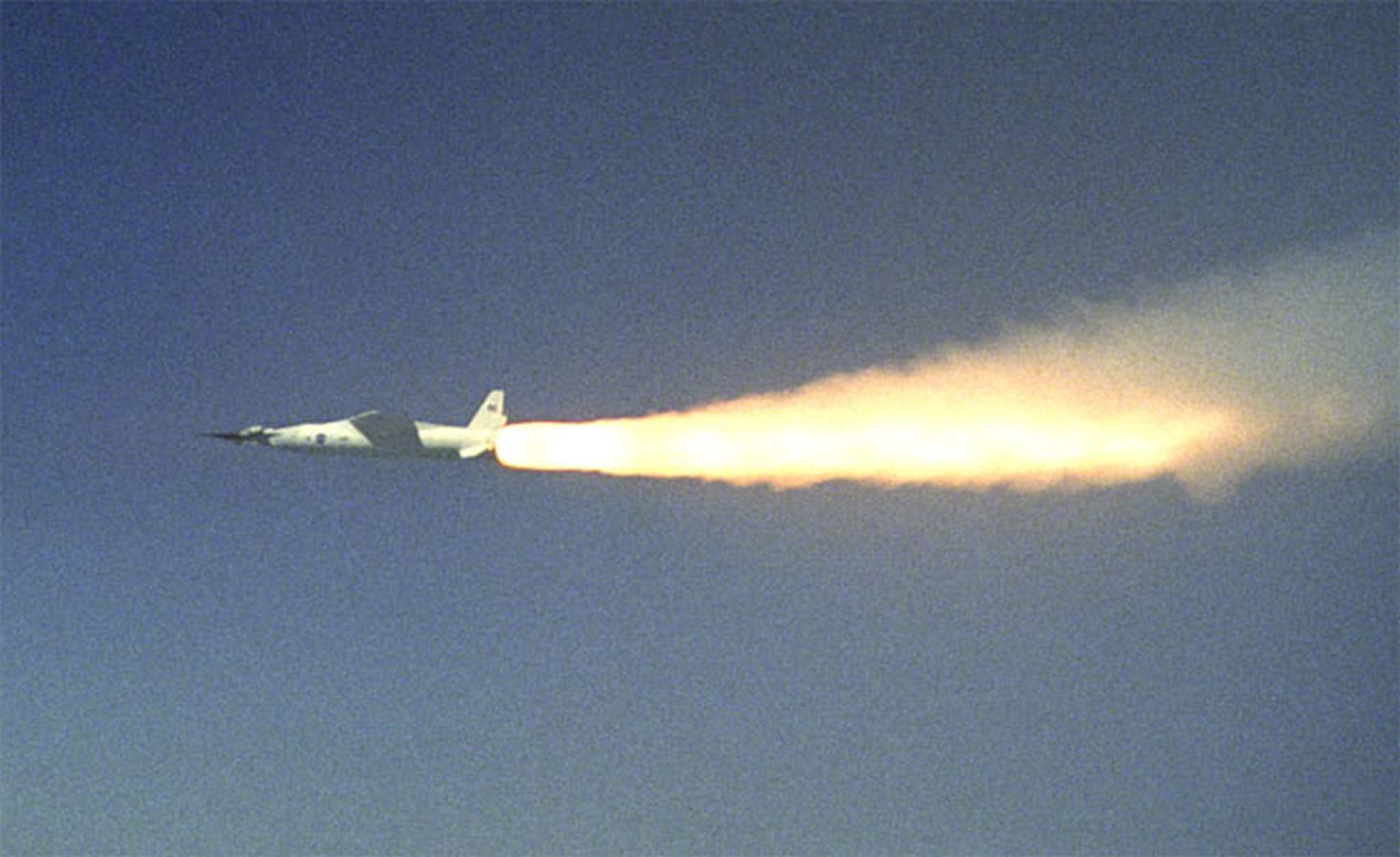
Hydrocarbon fuel is a more attractive option than hydrogen when designing an HCM powerplant. It is simple to handle, and offers both low cost and a high volumetric energy density. However, the engine designer faces the problem that the time needed for vaporisation, mixing, and burning of hydrocarbon fuel is hard to meet given the very high speed of airflow through the scramjet.
The Boeing X-51 WAVERIDER was designed to be air-launched from a B-52 to an altitude of about 50,000 ft. A solid-propellant rocket motor of the type used by the Lockheed Martin MGM-140 Army Tactical Missile System (ATACMS) was used to boost the vehicle’s speed to close to more than Mach 4.5 before being jettisoned, allowing the hydrocarbon-fuelled Pratt & Whitney Rocketdyne SJY61 scramjet to be ignited. The first three flights were unsuccessful, but on 1 May 2013, the final example flew under scramjet power for 210 seconds, reaching a speed of Mach 5.1 (5,400 km/h).
A free flight test of a Raytheon Technologies Hypersonic Air-Breathing Weapon Concept (HAWC) technology demonstrator was successfully conducted in September 2021 by DARPA and the USAF. After being air-launched, the vehicle used a solid-propellant booster, then successfully started its hydrocarbon-fuel scramjet, and demonstrated flight at Mach 5. A second vehicle configuration that had been developed by Lockheed Martin was successfully flight-tested in early 2022. This cruised at more than Mach 5 under the power of an Aerojet Rocketdyne scramjet sustainer, reaching altitudes greater than 65,000 ft and flying for more than 500 km.
Late in 2021, the USAF released brief details of a planned US$371M project to develop and demonstrate an air-breathing hypersonic powerplant. Known as Mayhem, this is intended to produce expendable testbeds for new propulsion concepts such as turbine-based combined cycle power-plants and dual-mode scramjets able to operate at speeds in the subsonic, supersonic, and hypersonic regimes.
Evolving Russian Technology
Russia’s 3M22 TSIRKON (SS-N-33) is a scramjet-powered HCM currently undergoing final trials. A solid-propellant booster stage accelerates it to supersonic speeds, after which its scramjet engine (reported to use hydrocarbon fuel) is used to take the missile to a cruising speed of up to Mach 9. The initial version is intended for naval use, and has been tested from the frigate ADMIRAL GORSHKOV, the nuclear submarine SEVERODVINSK, and a land-based coast-defence mounting. It can be used to attack ship or land targets at ranges of up to 1,000 km.
2022 should see the first flight trials of Russia’s OSTROTA, an air-launched HCM designed for use on the Su-34 and Tu-22M3. Developed by Raduga, this uses an Article 7 scramjet engine developed by the Turaevsky Machine-Building Design Bureau ‘Soyuz’. Few details of the missile and its powerplant have been released, but OSTROTA is expected to weigh less than 1,000 kg and to have a range of several hundred kilometres.
Other reports have mentioned a longer-ranged air-launched HCM with the acronym GZUR (GiperZvukovaya Upravliemaia Raketa) and the designation GREMLIN. The powerplant has been credited to Turaevsky Machine-Building Design Bureau ‘Soyuz’, and has a reported designation PRODUCT 70.
MBDA is working with ONERA on a planned follow-on to France’s current ASMP-A air-launched nuclear missile. Currently referred to as the ASN4G, this could take the form of a scramjet-powered weapon able to cruise at hypersonic speed. Under a project designated LEA, the two companies had been developing an experimental hypersonic demonstrator, and had planned to flight test this with Russian help in 2014-15. LEA was to have been air launched from a Tupolev Tu-22 M3 BACKFIRE bomber, then boosted to scramjet-compatible speed by an adapted liquid-propellant propulsion section from a RADUGA Kh-22 (AS-4 KITCHEN) air-launched antiship missile. A more recent plan called for LEA to be flight-tested on the US east coast, but this has yet to happen.
During a HIFiRE 2 (Hypersonic International Flight Research Experimentation Program 2) test launch conducted in 2012, a hydrocarbon-fuelled scramjet developed by the US Air Force Research Lab (AFRL), NASA, and the Australian Defence Science and Technology Organisation (DSTO) was boosted to operating speed by a three-stage launch system made up of two TERRIER solid-propellant boost motors and an ORIOLE solid-propellant sustainer motor. When the scramjet was operating at Mach 6, its internal airflow was still subsonic, but became supersonic once Mach 8 had been achieved.
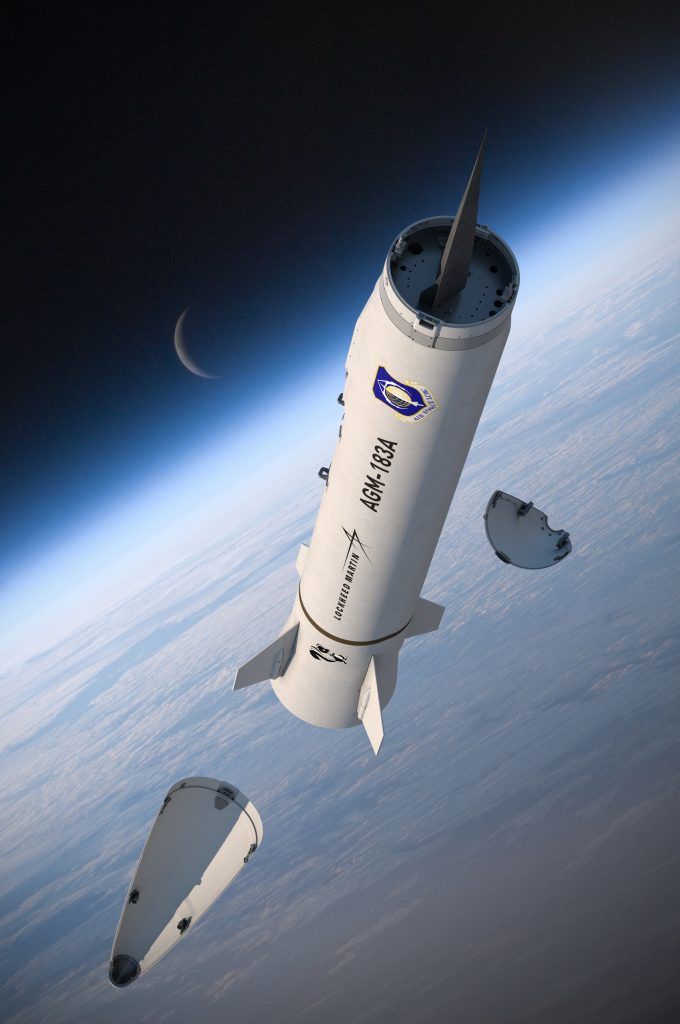
Photo: Lockheed Martin
Indian Efforts
To boost its Hypersonic Technology Demonstrator Vehicle (HSTDV) to scramjet-operating speed, India’s Defence Research and Development Laboratory used the rocket motor of an AGNI-I medium-range ballistic missile as a booster. During a test flight conducted on 12 June 2019, a cruise vehicle flew at Mach 6 under scramjet power. A launch on 7 September 2020 resulted in 20 seconds of scramjet-powered flight, and a velocity of almost 2 km/sec.
At sea level, Mach 5 corresponds to around 5,600 – 6,000 km/hr, gradually diminishing by around 5-6 percent at high altitude. A traditional subsonic cruise missile flies at around Mach 0.6 – 0.7, so the total flight time from launch to impact at a location some 1,200 km away is about an hour. A hypersonic missile flying at Mach 5 could cover that distance in around 10 minutes. But whether a hypersonic threat is based on HGV or HCM technology, a combination of high speed, high altitude, manoeuvrability, and minimal warning time will stress even the best of today’s air defences.
Doug Richardson




![BVRAAMs: Closing the horizon This photo showing a piece of the wreckage of an Indian Rafale, serial number ‘BS 001’, showed up on social media shortly after the IAF’s night operations of 6/7 May 2025. [Vigorous Falcon X Account]](https://euro-sd.com/wp-content/uploads/2025/06/Rafale-Wreckage-Piece_Vigorous-Falcon-X-Account-Kopie-218x150.jpg)
